Lec 9 Part 1 - Epithelia
1/32
There's no tags or description
Looks like no tags are added yet.
Name | Mastery | Learn | Test | Matching | Spaced |
|---|
No study sessions yet.
33 Terms
Whats the Purpose of layered epithelium
Covers surfaces
Found in skin, blood vessels, gastrointestinal, genitourinary (genital + urinary), and rspiratory tracts
what does the Urothelium layer mean
genitourinary tract
What does the Endothelium layer mean
blood vessels
Whats the Purpose of Glandular epithelium
They are specialized groupings of epithelial cells that secrete things
Whats the Purpose of Endocrine glands
Secrete substances into the blood or interstitial tissue to get to close or far away destinations
(thyroid, parathyroid, anterior pituitary, adrenal, and pancreatic glands)
endo- = internal
What is the Purpose of Exocrine Glands
Secrete substances into the external environment
(mammary, sweat, stomach, and pancreatic glands)
the Pancreas
A dual functional secretory organ that has both endocrine and excorine secretions.
Can trigger digestion (exo) and insulin secretion (endo-)
Whats a Basement / basal membrance
A thin, specialized layer of extracellular matrix that separates and supports epithelial or endothelial cells from the underlying connective tissue.
The main components are laminin and type IV collagen.
Epithelial cells sit on these.
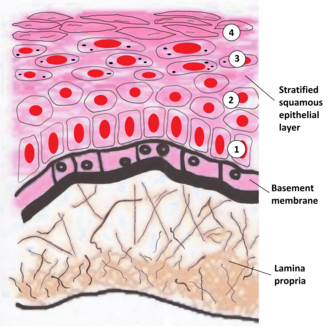
Whats a Polarized cell
A cell that is asymmetric, one side looks diferent from the other
How to distinguish an epithelial cell
Sits on a basement membrane
Commonly has apical microvilli and cilia
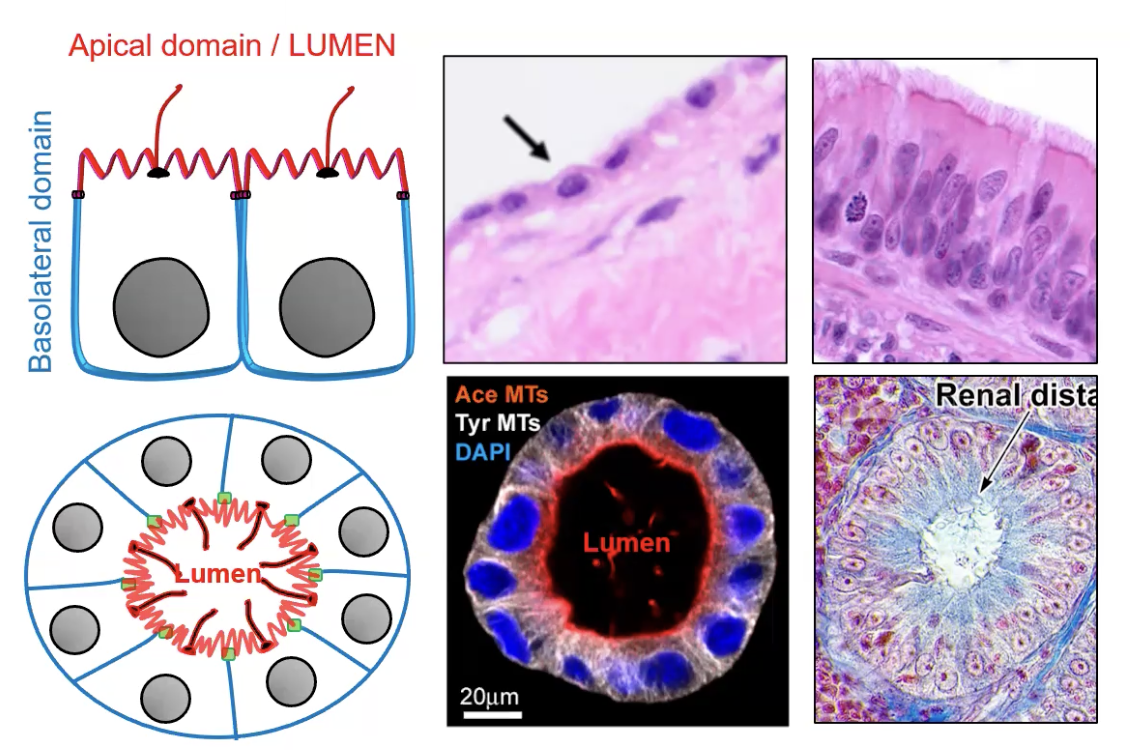
Whats the Purpose of tight junctions
Separate apical from basolateral membrane
Also connect cells in epithelial tissue
Also prevent paracellular transport
What are the key players for cell-cell adhesion of epithelial cells?
Tight junctions (TJ)
Adherens junctions (AJ)
Desmosomes (des)
Gap junctions
What are focal adhesions?
Proteins that link the intracellular actin cytoskeleton to the extracellular matrix
What are hemidesmosomes?
Proteins that link the intermediate filaments to the extracellular matrix
Where do epithelial cells get their nutrients from?
From the bloodstream found in the underlying connective tissue.
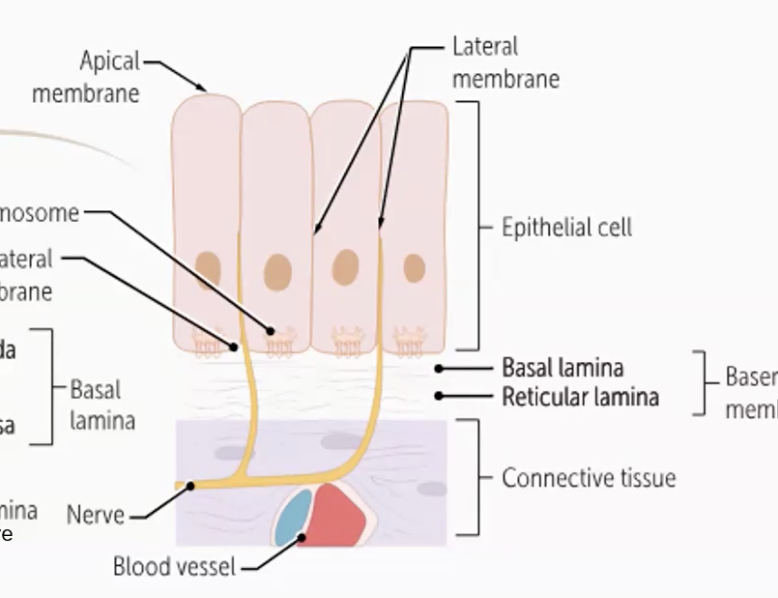
What organs has the most common single layered cells?
Gut, kidney, airway
What organ have the most stratified (multiple) layered cells?
Skin
What is Metaplasia
The reversible transformation where one type of mature, differentiated cell is replaced by another mature cell type that is not normally found in that tissue
Barrett's esophagus disease
Precursor to esophageal cancer
Cells from intestine (or shaped like intestinal cells) making their way into esophogeal cells
Squamous epitheium
Have flattened looking nuclei. Single layered. Sourround a lumen (inside of a blood vessel or lymphatic vessels).
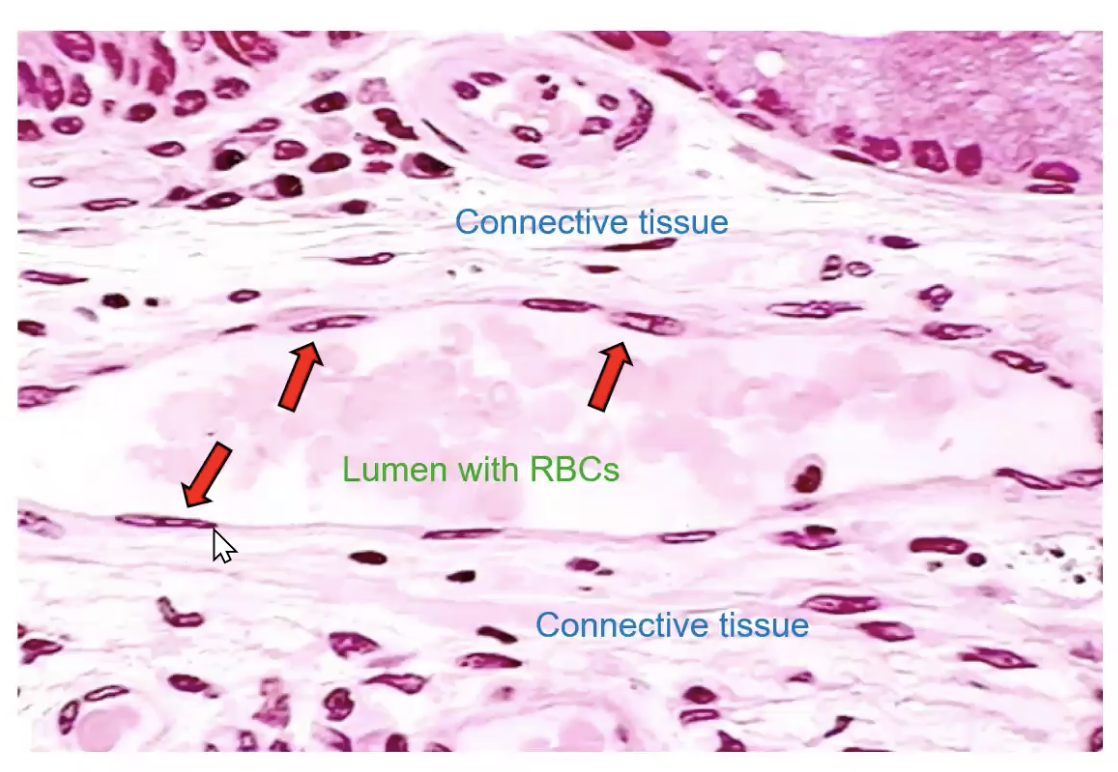
Simple cuboidal epithelium
Lumen in the center facing the apical cells. Round nuclei.
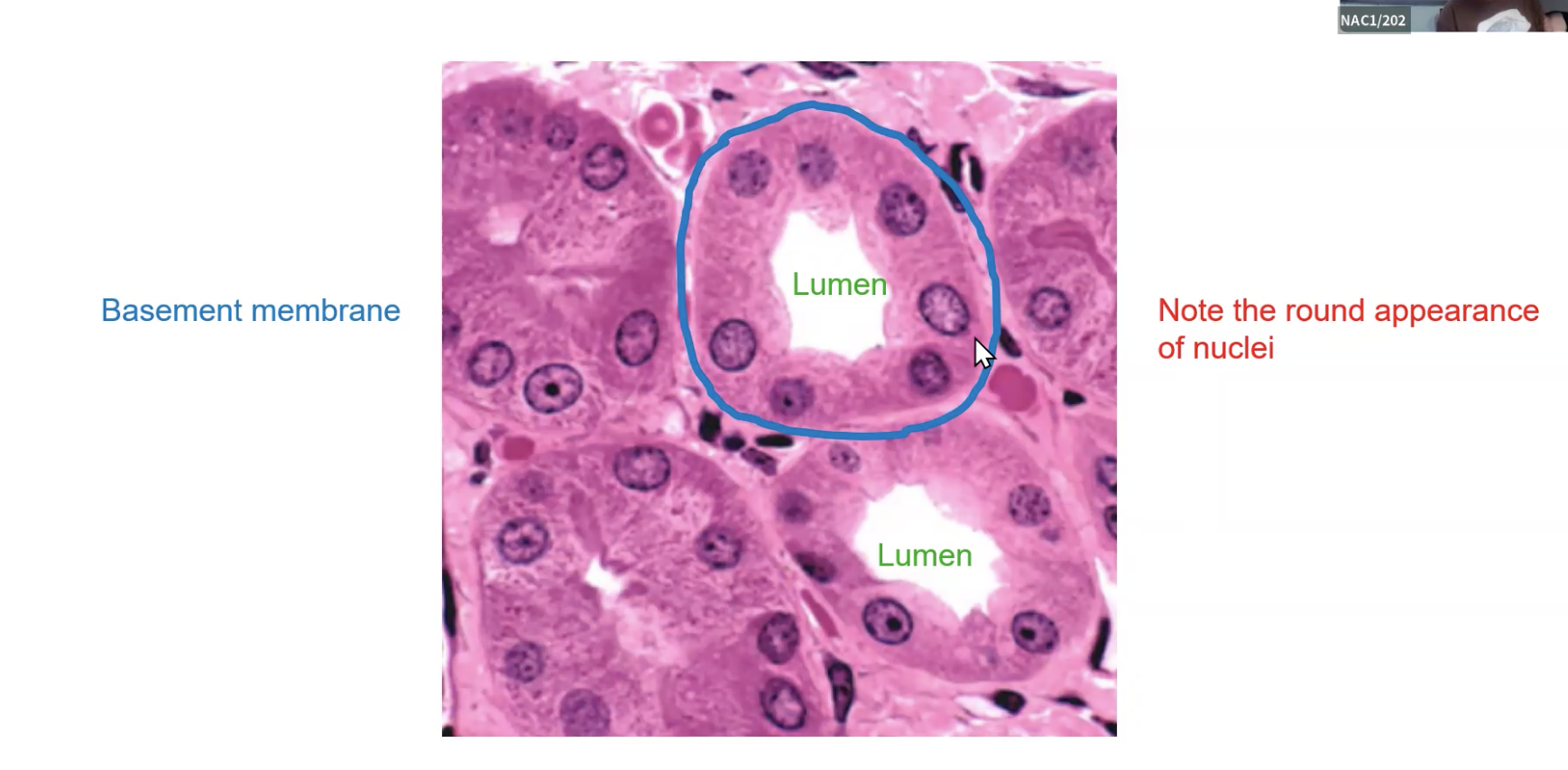
Simple columnar epithelium
Round nuclei and they are lined up. Single layered cells.

Pseudostratified columnar epithelium
Single layer. Nuclei at different heights.
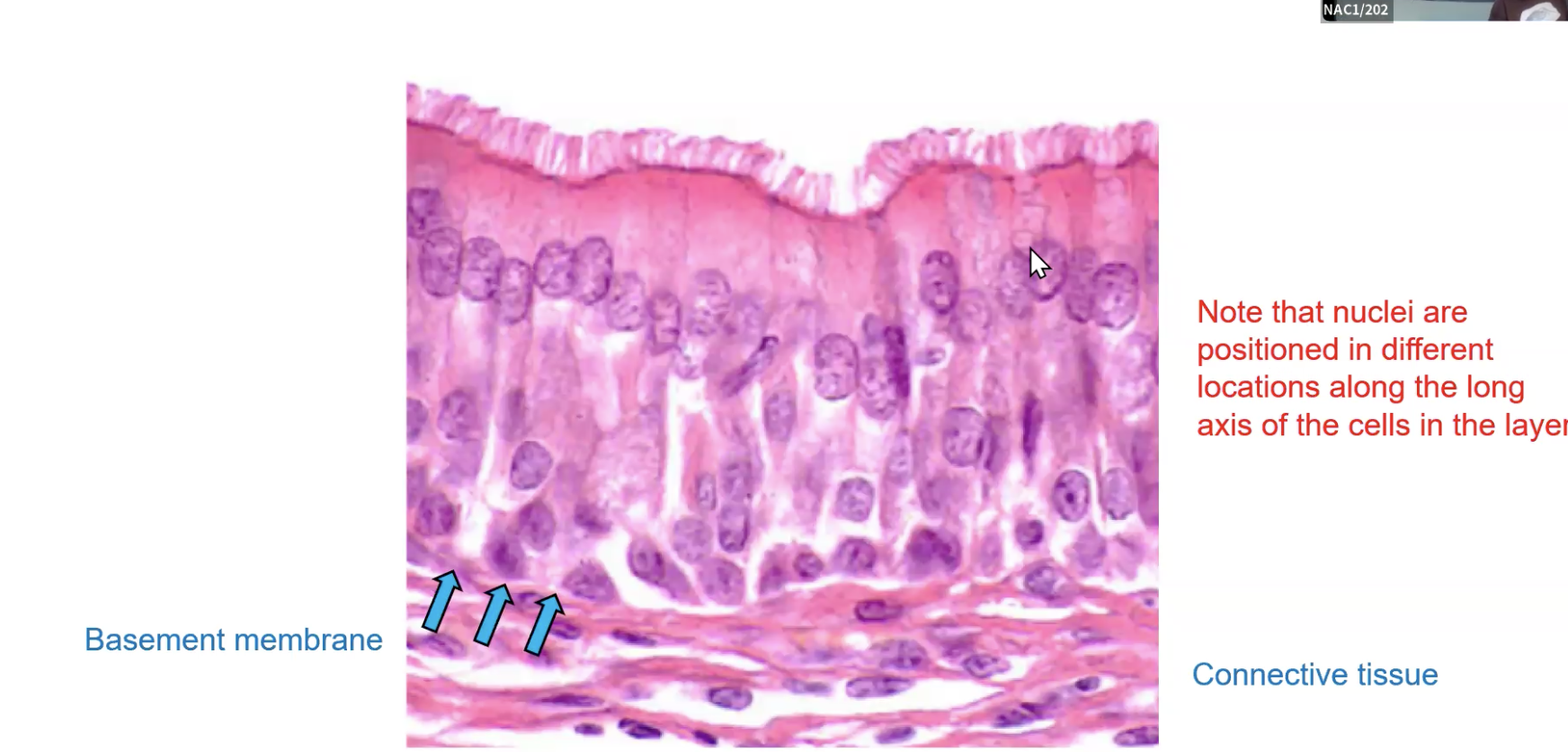
How do you distinguish different epithelia and their functions when they are adjacent?
What type of shape can you expect an abosorptive epithelial cell to have?
Simple columnar epithelium are absorptive like the rectum.
Stratified squamous epithelium are part of the anus which is similar to skin cells.

What are unicellular glands?
single, specialized secretory cells that secrete their products directly onto a surface, such as the goblet cells in the intestine and respiratory tract, which secrete mucus.
Goblet cells
unicellular glands found scattered within the epithelial lining of organs such as the respiratory and digestive tracts.
They synthesize and secrete mucin, which hydrates to form mucus that traps dust, microbes, and other particles in the respiratory tract.
In the gastrointestinal tract, mucus protects the lining from digestive enzymes and acidic contents.
How to identify mucus
Use PAS because it is very carb rich
Eccrine / merocrine secretion
the release of products via exocytosis without any loss or damage to the secreting cells.
The secretion involves secretory vesicles fusing with the plasma membrane and releasing their contents outside the cell.
![<p><span style="background-color: oklch(0.9902 0.004 106.47); color: oklch(0.3039 0.04 213.68);">the release of products via exocytosis without any loss or damage to the secreting cells.</span></p><ul><li><p class="my-2 [&+p]:mt-4 [&_strong:has(+br)]:inline-block [&_strong:has(+br)]:pb-2">The secretion involves secretory vesicles fusing with the plasma membrane and releasing their contents outside the cell.</p></li></ul><p></p>](https://knowt-user-attachments.s3.amazonaws.com/6066d317-ab1c-4018-96c8-c686244762b0.png)
Apocrine secretion
exocrine gland secretion where cells release their products by budding off part of their apical membrance, including secretory material and some cytoplasm
The cell still remains intact
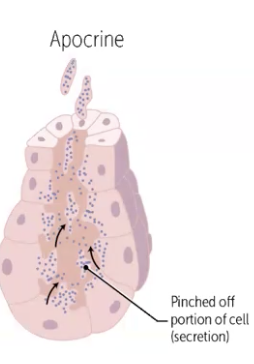
Holocrine secretion
mode of secretion in exocrine glands where the entire secretory cell disintegrates to release its contents
The cell accumulates a lot of the product it wants to secrete and then it dies. The whole dead cell and its secretions are released
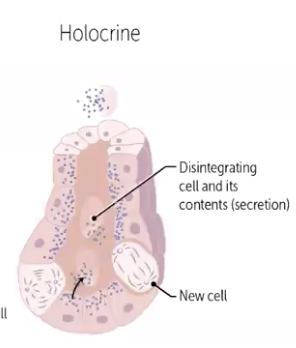
Why is the epithelia polarized with structural and functional asymmetry?
It allows for vectorial (directional) movement of molecules across epithelial cells.
This transport is bidirectional through epithelial cell layers.
Lumen → blood and Blood → cells and lumen
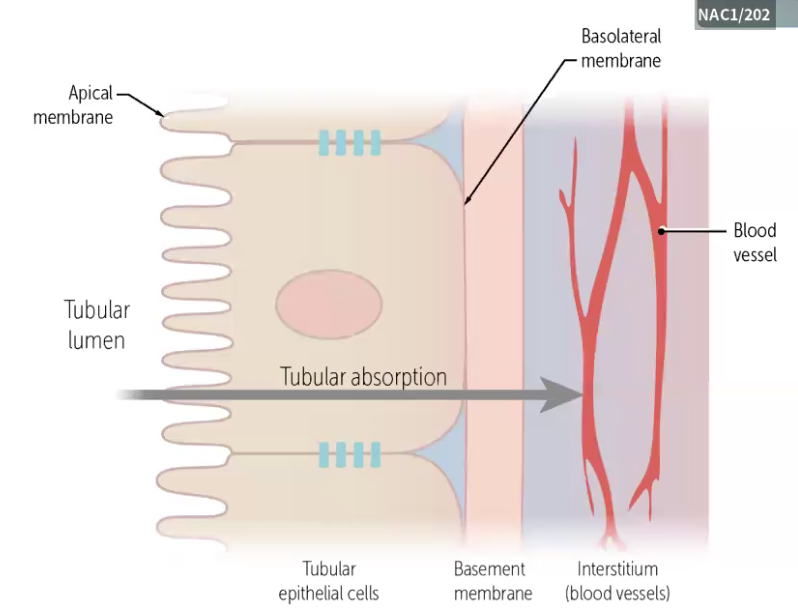
Other notable polarized cells
Neurons (axon transmits, dendrite recives)
Fibroblasts and leukocytes (WBCs) are transiently polarized in response to cues.
Fibroblasts change shape during processes like migration or wound healing
Leukocytes change shape during migration in response to external signals like chemoattractants.
How is this polarity necessay for functional specializations of epithelial cells acheived?
Through the formation of specialized cell adhesions in epithelia